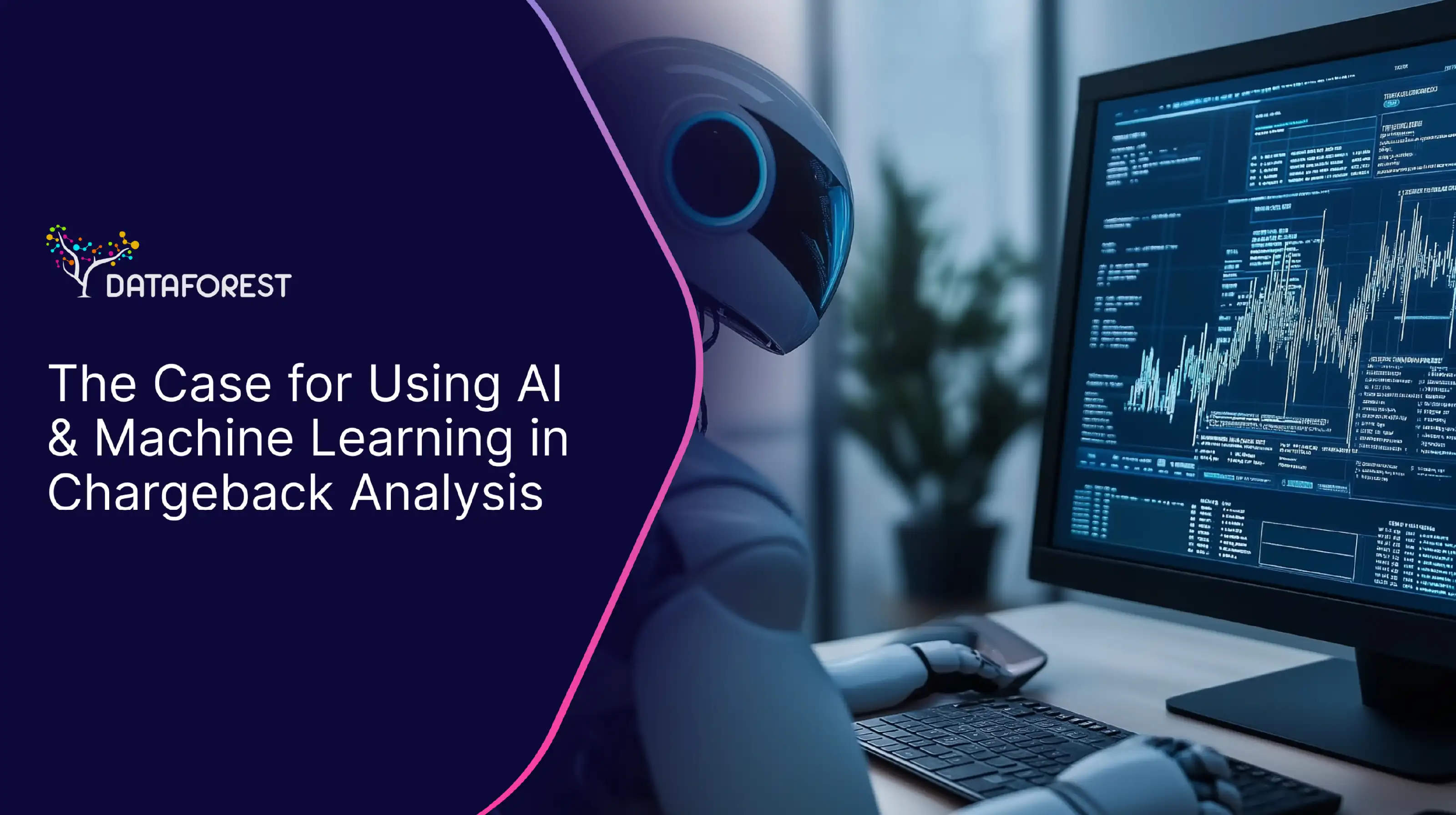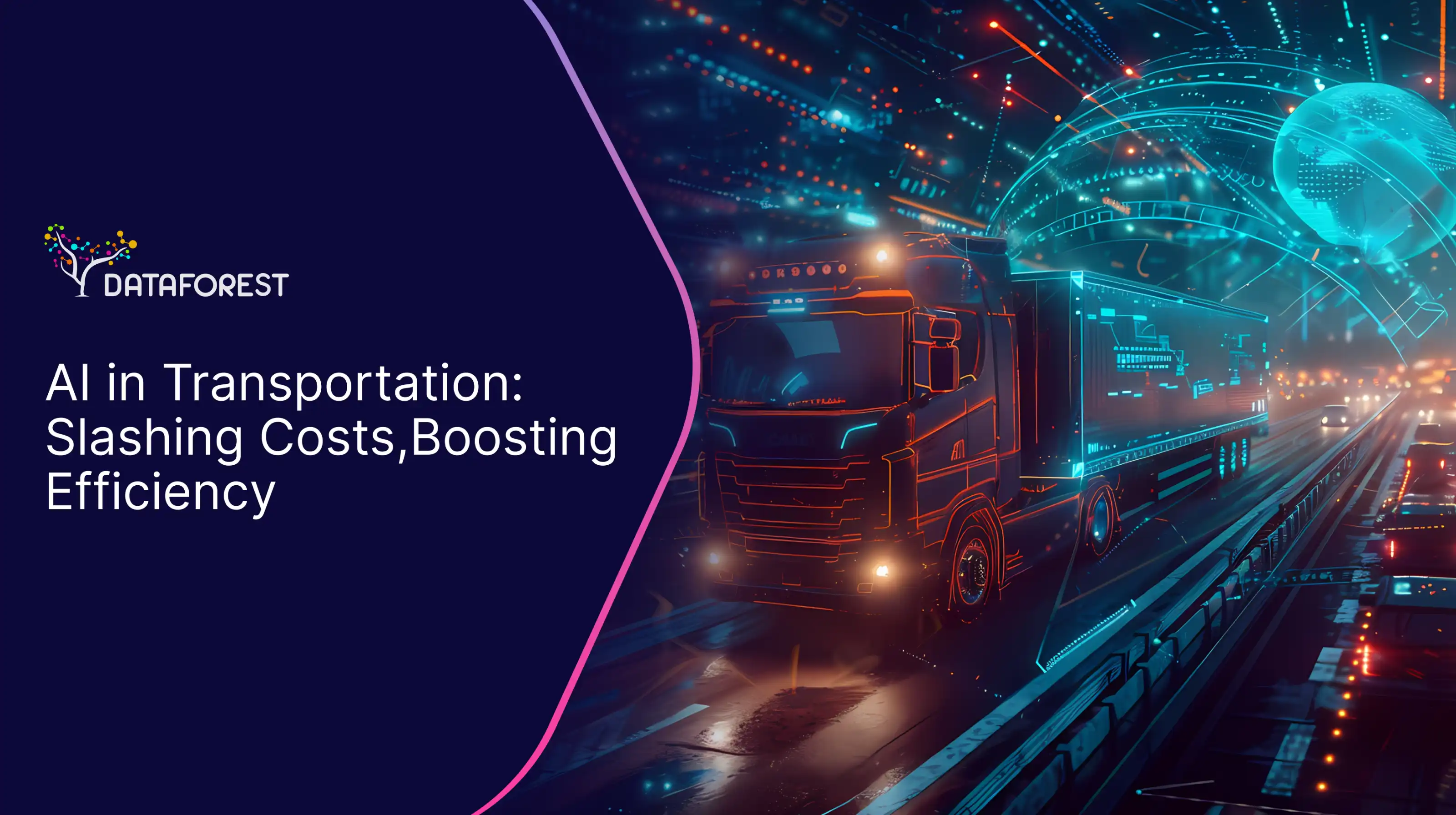From Cost Center to Strategic Imperative
Fintech is scaling on rails built for speed, not for disputes. Regulators expect resilience, consumers expect instant refunds, and fraudsters expect you to blink. The result: a growing wave of chargebacks that quietly act as a tax on your margins, erode customer trust, and divert leadership from growth. AI fixes this—when it's designed for the realities of modern payments and integrated with the rest of your risk stack.
This article unpacks why AI-driven chargeback analysis and chargeback AI capabilities are now table stakes across the financial services landscape, especially for established financial institutions and high-growth fintechs. You'll see where rules-based approaches break, how machine learning reduces both financial loss and customer friction, and what it takes to implement these systems responsibly—backed by fresh market data and practical case examples. If you're mapping an AI/ML roadmap for 2025, consider this your playbook for turning a reactive cost center into a source of competitive advantage.
The Growing Challenge of Chargebacks in Fintech
The chargeback problem isn't just growing; it's attacking on three fronts simultaneously: escalating financial damages, severe operational drag, and a degraded customer experience. For fintech leaders, understanding each of these threats is the first step toward building a durable defense.

Rising Costs and Financial Risks
Payment volume keeps climbing, and with it, the absolute exposure to disputes. In 2024, U.S. card purchase volume topped $11.9 trillion, up 5.8% year-over-year, magnifying the cost of even minor inefficiencies of dispute management. When your denominator is in the trillions, even a minor increase in chargeback rates translates into millions in direct losses.
The direct loss is, however, just the beginning of the story. The real cost is comprised of network fees, operational overhead for investigations, and potential scheme fines from the likes of Visa or Mastercard if you surpass your dispute thresholds. Sift's most recent benchmarks show strong increases across verticals (222% in e-commerce, for instance) and prove that first-party fraud pressure is now crushing legacy controls. It is also exacerbated by identity fraud, which led to $47 billion in losses for U.S. adults during 2024, creating strong incentives for FF that lead to downstream disputes.
Beyond these direct costs lie the second-order financial impacts: the squandered Customer Acquisition Cost (CAC) for every user who churns after a negative dispute experience, the compressed margins that can affect a company's valuation multiple, and the significant reputational damage that makes winning new enterprise clients harder and more expensive.
Operational Inefficiencies
For many fintechs, the dispute resolution process is a portrait of inefficiency. Your analysts are manually reconciling evidence across a half-dozen disconnected systems: CRM logs, payment gateway portals, device fingerprinting tools, internal admin panels, and Slack threads. Without robust chargeback automation software, each dispute becomes a manual, time-consuming investigation prone to human error. This is a challenge DATAFOREST has addressed by creating an automated reporting solution for a financial company.
This "swivel-chair" workflow doesn't just slow things down; it actively prevents scale. As volume grows, you're forced to hire more analysts, but this linear solution can't keep up with exponential transaction growth. The result is analyst burnout, higher error rates, and an increased risk of missing strict network deadlines for representment. Every missed SLA or incomplete evidence package increases write-offs and invites greater network scrutiny.
Customer Experience Impact
In the world of risk management, your best customers can often resemble fraudsters in edge cases: a new device used while on vacation, a legitimate purchase from an unusual IP address, or a transaction on a shared family account. Over-zealous, rules-based controls cast too wide a net, creating friction and falsely declining valid transactions. Lenient controls, on the other hand, invite abuse.
This is where AI-powered transaction monitoring is a crucial differentiator. It provides surgical precision to stay invisible to good customers while staying firm on true anomalies. The alternative is a constant maneuvering operation that leaves you weighing revenue protection versus customer feelings. Get it wrong, and you lose not only a transaction but also the lifetime value of a customer who feels unfairly singled out or ill-served.
Why Traditional Approaches Fall Short
Rules-Based Systems and Their Limitations
Static rules deteriorate the moment they are deployed. Fraud rings are sophisticated and quickly learn the thresholds for transaction values, IP locations, and other simple flags. A rule designed to block transactions over $500 from a new IP range might stop one unsophisticated fraudster, but it will also infuriate a legitimate customer traveling for business. The professional fraudster, meanwhile, learns the threshold and simply executes five transactions at $499. When applied to chargeback management, this brittle logic inevitably blocks too much legitimate revenue or lets too many fraud cases slip through.
Manual Investigation Constraints
Human analysts excel at nuanced judgment, but they are not built for high-volume data synthesis. Stitching together 50 data points per case across multiple systems is a task perfectly suited for automation. As your company grows, analyst throughput becomes a critical bottleneck, with skilled talent bogged down in repetitive, low-value tasks. This is precisely where an automated chargeback process delivers the most significant lift.
Lack of Scalability
Seasonal surges, new product launches, and geographic expansions immediately stress manually-driven dispute operations. Hiring sprees are a slow and expensive solution; training new risk analysts takes months, and maintaining quality control becomes nearly impossible. This linear scaling model—one new analyst for every X new disputes—is unsustainable and acts as a direct inhibitor of growth. True scalability requires a system that gets smarter and more efficient as data volume increases, a core tenet of AI and machine learning.
How AI Transforms Chargeback Analysis
Advanced Fraud Detection and Prevention
Supervised and semi-supervised models evaluate a rich tapestry of signals in real time: device integrity, behavioral biometrics, session risk, merchant descriptors, historical support tickets, and delivery metadata. This allows them to flag likely first-party fraud before a dispute is ever filed. Sift's data showing an industry-wide uplift in dispute rates is exactly the kind of complex, multi-faceted pattern that machine learning is built to identify and neutralize early.
Predictive Analytics for Risk Scoring
Predictive analytics for chargebacks—trained on labeled disputes and their outcomes—scores transactions for their propensity to be disputed. This moves the posture from defensive to prescriptive. Instead of just reacting, the system can recommend a next-best action: trigger a step-up authentication challenge, place a temporary hold on shipment, send a proactive "Did you make this purchase?" notification, or even route the case to a specialized agent. This is AI in financial risk management applied to prevention, not just post-dispute defense.
Automated Dispute Resolution
Network rule changes are making automation a competitive necessity. Visa's Compelling Evidence 3.0 (CE 3.0), for instance, is a game-changer. It formalizes the use of richer historical evidence to counter common "no-recognition" disputes. AI is the only practical way to leverage this at scale, as no human analyst can collate a customer's entire purchase history, device usage, and delivery data in seconds. AI systems using techniques like Natural Language Processing (NLP) can auto-assemble compliant evidence packages and submit them far more quickly, dramatically improving win rates. Similarly, as Mastercard updates its dispute rules and timeframes, automation ensures compliance and prevents missed deadlines.
Continuous Learning and Adaptability
Model drift is the enemy of effective risk management. Static rules go stale, but mature chargeback solutions ship with active learning loops. Feedback from dispute outcomes, network reason codes, and analyst annotations is used to constantly retrain the models. This is how the system gets smarter and more resilient over time, adapting to new fraud tactics without manual intervention.
Business Benefits for Fintech Decision-Makers
Cost Reduction and Operational Efficiency
Chargeback recovery solutions and case-build automation free your skilled analysts for high-judgment work like investigating complex fraud rings or educating merchants. Paired with real-time chargeback alerts, leaders see a material reduction in OPEX per dispute by cutting manual handling time and containing costly processor and network fees.
Revenue Protection
AI prevents avoidable chargebacks and strengthens representment on legitimate transactions. For a VC-backed or publicly traded fintech, every point of margin recovered from chargeback reduction directly impacts the multiple at which the company is valued. It's not just about saving money; it's building tangible enterprise value. As Nilson's scale numbers remind us, even small rate reductions against trillions in volume can move EBIT in a way your CFO will notice.
Improved Compliance and Regulatory Readiness
Regulators, guided by frameworks like the Basel Committee's guidance on digitalization, increasingly expect robust model governance, explainability (XAI), and strong third-party risk management. An AI-driven AI dispute resolution system with integrated chargeback dispute tracking, built-in controls, testing, and data lineage is no longer a "nice-to-have"; it's a prerequisite for operating in a regulated financial environment.
Enhanced Customer Experience
Faster, fairer, data-driven decisions reduce customer complaints and churn. Pairing chargeback reduction strategies with a proactive user experience—such as clear receipts, reminders before recurring bills, and "recognize this charge?" prompts—creates a dual win: lower dispute volumes and higher customer trust.
Strategic Alignment With Digital Transformation
Chargeback Analysis as Part of a Bigger AI/ML Roadmap
For the C-suite, chargeback AI belongs on the same strategic roadmap as fraud prevention, streamlining investment with AI-powered scoring, credit risk, and CX analytics. McKinsey highlights how generative and agentic AI are reshaping risk workflows, moving the industry from static controls to dynamic, automated decision-making across the entire risk lifecycle. By building a common feature store for fraud and disputes, insights from one domain can immediately strengthen the other, breaking down traditional data silos.
Positioning for Competitive Advantage
In the B2B fintech space, dispute excellence is a powerful commercial differentiator. When selling to large merchants or enterprise platforms, a sophisticated, transparent, and efficient chargeback handling system can be a key factor in winning the deal. It demonstrates operational maturity and de-risks the partnership for your clients.
Key Considerations for Implementing AI in Chargeback Analysis
Data Infrastructure Readiness
You need unified, real-time access to payment processor logs, device signals, order and fulfillment data, CRM tickets, and subscription lifecycle events. DATAFOREST's Data Engineering services build these governed, production-ready pipelines. If your stack is fragmented, the essential first step is a Data Architecture Assessment.
Technology Integration
Modern dispute automation must interface with gateways, CRMs, case management systems, and network APIs. DATAFOREST's Custom Software Development practice specializes in building the adapters and workflow engines for this complex ecosystem, while our DevOps as a Service ensures a secure, scalable, and cost-efficient cloud footprint. For advanced modeling, DATAFOREST provides dedicated Data Science and Predictive Analytics services.
Model Governance and Explainability (XAI)
Implementing AI in a regulated space requires more than just a predictive model; it also requires a governance framework. This is non-negotiable for passing audits and building trust with your internal teams. You want detailed documentation for your models, a clear sense of what drove their decisions (explainability), and ongoing monitoring to catch bias or drift. Such a framework keeps your decisions from being not just correct, but also defensible – a point emphasized even further by Basel's view on AI controls.
Change Management and Team Enablement
Your risk teams need to be enabled, not replaced. This means training them on new evidence schemas like CE 3.0, teaching them how to interpret model outputs, and empowering them to focus on the most complex and ambiguous cases that the AI flags for review.
Turning a Cost Center into a Competitive Moat
If worked strategically, the chargeback report goes from being a reactive cost center to a proactive profit lever and an investment into a competitive moat. Here's how to do it: consolidate data, apply targeted machine learning, automate your evidence assembly for the new network rules, and govern the whole escaping cascade behind your system like there is an auditor watching over your shoulder.
If your team is ready for a pragmatic assessment or a proof-of-value sprint, DATAFOREST can stand up the pipelines and models to prove the ROI.
Book a consultation to build your roadmap.
FAQ
What types of data are most valuable for training AI models in chargeback analysis?
Start with payment logs (auth, capture, refund), device and session telemetry, delivery confirmations, CRM tickets, and subscription lifecycle events. Then, enrich this with identity proofing signals, account takeover (ATO) alerts, and merchant-specific descriptors. Network rule changes like Visa CE 3.0 make historical purchase evidence especially valuable for friendly-fraud disputes. For implementation help, see DATAFOREST's Data Engineering services.
How quickly can AI solutions for chargeback analysis start delivering measurable results?
With clean data pipelines, a skilled team can often ship a propensity-to-dispute model and automated evidence assembly in 8–12 weeks. You can expect to see early reductions in avoidable disputes and improved win rates soon after. The problem is large and growing, which is why targeted AI can move the needle quickly. To accelerate a pilot, explore DATAFOREST's Predictive Analytics service.
Can AI reduce chargeback fraud without creating friction for legitimate customers?
Yes, this is a core strength of modern AI. By analyzing a rich context of signals (device, behavior, history), models can be far more precise than simple rules, minimizing false positives. This allows you to reserve high-friction interventions for only the highest-risk cases, keeping legitimate customers on a fast, frictionless path.
What role does explainable AI (XAI) play in regulatory compliance for chargeback analysis?
XAI is essential for compliance. It provides the "reason codes," feature importance scores, and other artifacts that help risk and compliance teams justify automated decisions before auditors and regulators. Regulators such as the Basel Committee are explicit about the need for governance around AI in banking; they treat XAI as a core requirement, not an add-on.
How does AI-based chargeback analysis integrate with broader fraud prevention systems?
Disputes represent the latter half of the fraud lifecycle. Signals and outcomes must flow both ways in a continuous loop: fraud alerts should automatically enrich dispute case files, and dispute decisions (e.g., confirmed friendly fraud) must be used to retrain upstream fraud models. For integration patterns, review DATAFOREST's Solutions and relevant blog playbooks.
Can AI-powered chargeback systems adapt to cross-border transactions and multi-currency environments?
Yes, provided your feature store and models are built to include geography, MCC, currency pairs, local delivery norms, and regional scheme rules. Timeframes and evidence requirements differ across networks; Mastercard's recent updates underscore why automation of deadlines and evidence artifacts is essential for scaling globally.





.svg)
.webp)















